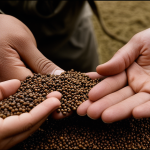Understanding the Impact of Tropical Heat on Athletic Performance
The tropical heat poses unique challenges for athletes, significantly influencing their athletic performance. As temperatures rise, the body must work harder to regulate its internal temperature, often leading to increased heart rates and dehydration. This can compromise performance due to reduced endurance and slower recovery times. Common heat-related issues include heat exhaustion, characterized by intense sweating, dizziness, and fatigue, and the more severe heat stroke, which requires immediate medical attention.
To combat these effects, cooling strategies become essential. Athletes training in tropical climates often employ practices such as wearing ventilated clothing, taking frequent hydration breaks, and scheduling training sessions during cooler parts of the day. These methods help maintain body temperature and reduce the risk of overheating. Furthermore, using ice packs or cold water immersion can be effective post-exercise recovery techniques.
This might interest you : Tailoring a Custom Recovery Plan for Tennis Players Struggling with Chronic Wrist Injuries
These strategies not only enhance performance but also safeguard the athlete’s health. Therefore, understanding the physiological implications of heat and employing appropriate cooling methods is vital for athletes competing in tropical conditions. Ensuring their safety while optimizing their physical output stands as a key concern for coaches and sports scientists alike.
Hydration Strategies for Enhanced Performance
In the intense tropical heat, maintaining optimal sports hydration is crucial for athletes. Proper hydration not only prevents heat-related issues like dehydration but also enhances overall athletic performance. Let’s examine some key aspects of hydration strategies.
Also to see : Enhancing Tennis Performance: How Nutritional Genomics Customizes Your Optimal Diet
Importance of Proper Hydration
Adequate water intake is essential. When athletes train in hot climates, their bodies lose more fluids through sweat, increasing the risk of dehydration. Consuming sufficient fluids before, during, and after exercise helps maintain core temperature and performance levels.
Electrolyte Replenishment
Sweating causes loss of electrolytes such as sodium and potassium, vital for nerve and muscle function. Electrolyte balance can be maintained by consuming sports drinks or supplements. This balance prevents cramps and muscle fatigue, essential for sustained athletic output.
Timing Hydration Effectively
Timing is key in hydration. Regular sips throughout workouts ensure consistent fluid balance, while post-exercise hydration aids recovery. Different methods include:
- Pre-hydrating: Adequate fluid intake before starting an exercise session.
- During activity: Monitoring and replenishing fluids at regular intervals.
- Post workout: Rehydrating with drinks rich in electrolytes to facilitate recovery.
Incorporating these strategies helps combat the challenges presented by tropical conditions.
Innovative Clothing Choices for Heat Adaptation
Navigating the challenges of tropical heat becomes easier with the right athlete clothing. Advances in fabric technology have led to the creation of breathable fabrics that enhance comfort and performance by allowing air circulation and moisture evaporation. Moisture-wicking clothing further assists athletes by drawing sweat away from the skin, thereby reducing the likelihood of skin irritation and improving overall athletic performance.
In hot climate training, selecting the right clothing is not just about comfort—it’s about maintaining health and maximizing efficiency. Ventilated designs are a game-changer for athletes. They enhance airflow, reduce heat build-up, and lower the risk of heat-related issues like heat stroke and heat exhaustion.
Investing in heat-resistant gear offers significant advantages in tropical conditions. This type of clothing is engineered to withstand high temperatures while keeping athletes cool and agile. By utilizing breathable fabrics and moisture-wicking materials, athletes can sustain longer periods of activity without succumbing to the debilitating effects of heat, ultimately supporting peak performance levels.
Pre-Cooling Techniques for Optimal Performance
Athletes facing tropical heat can benefit significantly from pre-cooling methods, which help manage body temperature regulation. Pre-cooling strategically lowers the body’s core temperature before exertion, enhancing athletic performance by delaying the onset of heat-related issues.
Types of Pre-Cooling Strategies
Various pre-cooling methods include ice baths, cooling jackets, and cold water immersion. These techniques are used before training or competition to reduce initial body temperature. Ice baths are popular, as they effectively lower core temperature but require access to facilities.
Use of Cooling Vests
Cooling vests offer a portable solution, easily worn during warm-ups. They contain cooling gel or ice packs strategically placed to target key heat-production areas of the body, maintaining a manageable temperature. This ensures that athletes retain energy for performance rather than spending it on cooling themselves down.
Timing Pre-Cooling Interventions
Proper timing is crucial for achieving optimal benefits. Ideally, pre-cooling interventions should be conducted 30-60 minutes before activity, allowing for adequate core temperature reduction without causing discomfort or stiffness. Implementing these techniques can significantly enhance performance capabilities in tropical climates.
Equipment to Beat the Heat
In the world of sports, cooling equipment has emerged as a vital tool for athletes facing tropical heat. These innovations are designed to mitigate the risks associated with high temperatures and enhance athletic performance. A standout in this field, personal fans are lightweight, making them perfect for direct airflow during intense workouts, reducing the risk of heat-related issues.
Additionally, portable ice packs serve as a quick solution to lower body temperatures, offering instant relief during breaks. They can be easily stored in a cooler bag, making them accessible during long training sessions. This convenient tool ensures that athletes remain comfortable and focused on their routines.
Beyond these basics, smart technology offers advancements in temperature management. Smart temperature monitoring devices are particularly advantageous, enabling athletes to track their core temperatures and adjust protocols as needed. These devices provide real-time feedback on body heat levels, alerting users to potential overheating situations before they escalate. Consequently, athletes can make data-driven decisions to safeguard their health and optimize performance. Such innovations represent practical solutions, tailored to the demands of competing in challenging climates, ensuring both safety and excellence in sports.
Expert Insights and Athlete Testimonials
Navigating tropical heat requires informed strategies. Insights from experts and athletes reveal notable successes. Case studies of athletes using advanced cooling strategies demonstrate their impact on athletic performance. For instance, many report improved endurance when incorporating pre-cooling methods and smart temperature monitoring.
Case Studies of Successful Cooling Strategies
Analysis of these cases shows that ice baths and cooling vests consistently aid in maintaining optimal temperatures. Regular use before competitions leads to sustained performance levels.
Expert Opinions on Best Practices
Experts suggest a tailored approach, highlighting the importance of individual body temperature regulation. Coaches emphasize integrating breathable fabrics with hydration protocols. Sports scientists recommend frequent training adaptation assessments.
Real-life Testimonials from Athletes
Athletes share firsthand accounts of overcoming heat-related issues. A marathon runner hailed personal fans for providing critical comfort, while a triathlete credited cooling gels for reducing muscle fatigue. These experiences underscore the benefits of a comprehensive cooling plan.
When choosing your methods, consider unique needs and conditions. Engage with experts and peers to fine-tune approaches, ensuring safety and enhanced performance.
Additional Resources for Athletes
In the quest for maintaining peak athletic performance, having access to comprehensive cooling strategy guides is indispensable. These resources delve deeply into the science of tropical heat adaptation. Advanced literature and resource links give athletes insights into cutting-edge methods, enhancing understanding and facilitating better decision-making.
Further Reading on Innovative Strategies
Athletes seeking to optimize their performance under extreme conditions can benefit significantly from curated articles and studies. These well-researched documents provide evidence-based insights into effective cooling strategies leveraging technological advances and physiological insights.
Access to Expert Organizations
Connecting with expert organizations dedicated to sports health offers athletes a platform for consultation and support. These bodies often compile success stories from diverse sports disciplines, illustrating how individuals have effectively managed heat-related issues through targeted interventions.
Guides and Tools for Hot Climates
Providing guides and tools tailored specifically for athletes in tropical environments is crucial. These holistic resources offer actionable tips on equipment choice, hydration practices, and clothing options, ensuring that athletes are well-equipped to thrive in high-temperature settings while mitigating potential health risks.



